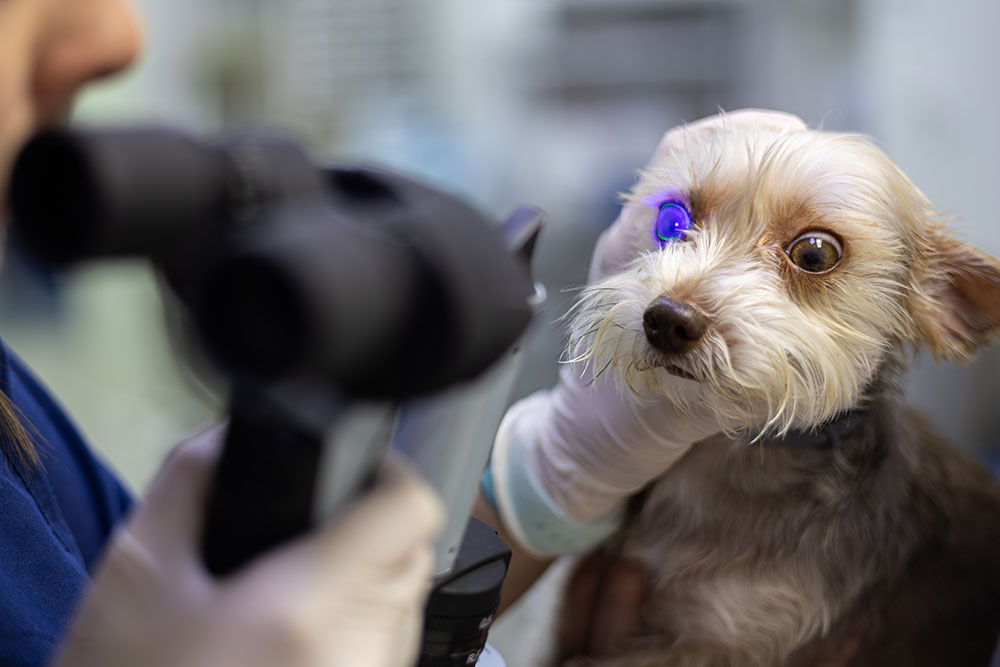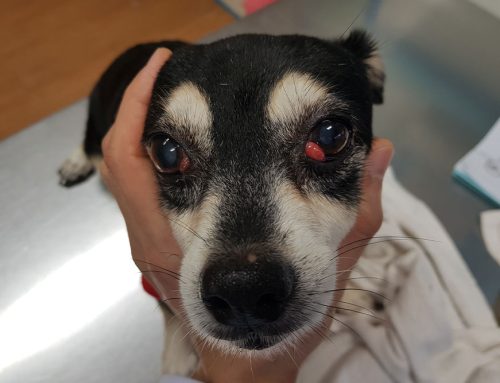At Envision More Veterinary Ophthalmology, we know how much your dog means to you. Seeing changes in your pet’s eyes can be scary, especially when the condition is chronic. One of the more common long-term eye diseases we treat is pannus—a manageable but progressive condition that can affect your dog’s vision if left unchecked.
This guide will help you understand what pannus is, how to recognize the signs, what treatment options are available, and how to support your dog long-term.
What Is Pannus?
Also known as Chronic Superficial Keratitis (CSK), pannus is an autoimmune disease where the body’s immune system mistakenly attacks the cornea (the clear surface of the eye). Over time, this leads to pigmentation, vascularization, and thickening of the cornea—all of which can interfere with your dog’s vision.
Pannus is not contagious, but it is progressive and lifelong. With early detection and ongoing management, most dogs live full, comfortable lives.
Learn more about Pannus from the Cornell Canine Genetics Lab
Why Early Recognition Matters
Pannus often starts subtly and worsens over time, especially with exposure to UV light. The sooner treatment begins, the better the outcome for your dog’s vision.
Early signs may include:
- Pink or cloudy film across the eye
- Raised or pigmented lesions on the cornea
- Mild irritation or light sensitivity
Advanced cases may show:
- Significant corneal thickening
- Darkened or opaque areas
- Vision changes, especially in low light
For a visual guide, see “Something’s Growing on My Dog’s Eye” – ACVO
Which Dogs Are at Risk?
Pannus is more common in certain breeds, particularly those with a genetic predisposition:
- German Shepherds
- Greyhounds
- Belgian Tervurens
- Border Collies
Living at higher elevations (with increased UV exposure) can also raise the risk.
Embark Veterinary: Understanding Pannus Risk
How Pannus Is Diagnosed
Your veterinarian or veterinary ophthalmologist may use several tools:
- Slit lamp exam to assess corneal changes
- Fluorescein stain to check for ulcers
- Schirmer tear test to rule out dry eye
- Corneal cytology or biopsy in complicated cases
Colorado State University Guide on Pannus
Treatment: Lifelong, But Manageable
While pannus can’t be cured, it is highly treatable with daily care and regular monitoring.
Medications often include:
- Corticosteroid eye drops (e.g., Prednisolone, Dexamethasone)
- Immunosuppressants (e.g., Cyclosporine, Tacrolimus)
- Artificial tears for corneal hydration
Medications are usually administered once up to 6 times daily, and treatment may be adjusted seasonally depending on sunlight exposure.
Explore treatment protocols at ACVO
Sun Protection Is Part of Treatment
UV light aggravates pannus—so shielding your dog’s eyes is essential.
UV-protection strategies:
- Doggles (dog sunglasses): A helpful tool, especially during walks or hikes
- Avoid mid-day outings: Limit sun exposure from 10 AM–4 PM
- UV-blocking ointments: May be prescribed by your vet
How Sunglasses Help Dogs with Pannus – Texas A&M
Long-Term Care & Monitoring
Managing pannus means staying consistent with treatment and regularly checking in with your vet:
- Schedule rechecks every 6–12 months
- Monitor at home for any increase in pigmentation, cloudiness, or discomfort
- Adjust medications as needed (especially seasonally)
Dogs with well-managed pannus often maintain good vision for years.
Common Eye Conditions in Pets – ACVO
FAQs: What Pet Owners Ask Us Most
Is pannus painful?
No, pannus is not typically painful, but vision loss and discomfort can occur if left untreated.
Can pannus be cured?
Pannus cannot be cured, but it can be controlled with lifelong treatment.
Will my dog go blind?
Without treatment, pannus can cause blindness. However, with proper care, most dogs maintain functional vision.
Does every dog with pannus need sunglasses?
Not necessarily—but UV protection significantly slows progression and is recommended, especially for active dogs.
We’re Here to Help
At Envision More Veterinary Ophthalmology, our goal is to preserve your pet’s comfort and vision with compassionate, expert care. If your dog is showing signs of pannus—or if you’re managing an existing diagnosis—we’ll work with you to create a treatment plan that fits your lifestyle and your pet’s needs.
Concerned about your dog’s eyes? Schedule an appointment to speak with our team today.








Leave A Comment